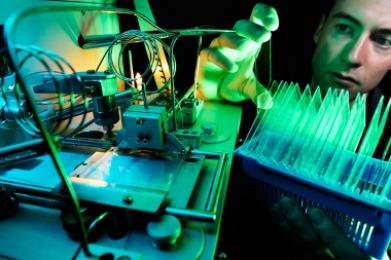Performance Polymers
 Performance Polymers (PP) create new opportunities to face the new challenge of sustainability for the construction, transport, appliances and electronics industries. These polymers have great potential to contribute to a reduction in energy use, environmental impact and climate change effects. This can be achieved e.g. through parts consolidation, weight reduction, life time extension, recyclability and utilisation of renewable feedstock. Furthermore, the complex part and assembly performance requirements necessitate a close technological cooperation between polymer supplier, converter and end-user. This calls for a thorough understanding of polymerisation, polymer modification as well as polymer processing, properties and design.These themes are reflected in the strategy and objectives of the Performance Polymers Technology Area, which includes investigations related to fundamental issues in the value chain using a ‘chain of knowledge’ approach in the context of energy saving, durability, ultimate performance and sustainability.
Performance Polymers (PP) create new opportunities to face the new challenge of sustainability for the construction, transport, appliances and electronics industries. These polymers have great potential to contribute to a reduction in energy use, environmental impact and climate change effects. This can be achieved e.g. through parts consolidation, weight reduction, life time extension, recyclability and utilisation of renewable feedstock. Furthermore, the complex part and assembly performance requirements necessitate a close technological cooperation between polymer supplier, converter and end-user. This calls for a thorough understanding of polymerisation, polymer modification as well as polymer processing, properties and design.These themes are reflected in the strategy and objectives of the Performance Polymers Technology Area, which includes investigations related to fundamental issues in the value chain using a ‘chain of knowledge’ approach in the context of energy saving, durability, ultimate performance and sustainability.
Subprogrammes
Polymer and network chemistry and modification
Studies focusing on an increase in the use of bio-based materials on the one hand and cost and energy reductions in polymerisation and network formation on the other. New concepts for monomer and polymer molecular structure to achieve step changes in the balance of flow, static and dynamic mechanical and other functional properties.
Processing for properties
Understanding of the relationship between the molecular structure, processing and properties of polymers. Studies of the processing effects of intermolecular interactions, e.g. hydrogen bonding. Processing, modification and vulcanisation studies of elastomer blends.
Advanced reinforced thermoplastics and synthetic fibres
Studies on interface effects in fibrereinforced composite systems, effects of nano-reinforcement on polymer material properties on macroscopic and microscopic scale, friction and wear of fibre-reinforced thermoplastics and elastomers.
Stability and long-term performance
Investigations of the chemical and physical ageing mechanisms and their interplay with the ultimate objective ofpredicting lifetime and realising fit-for-use design over the entire life cycle.
Caes